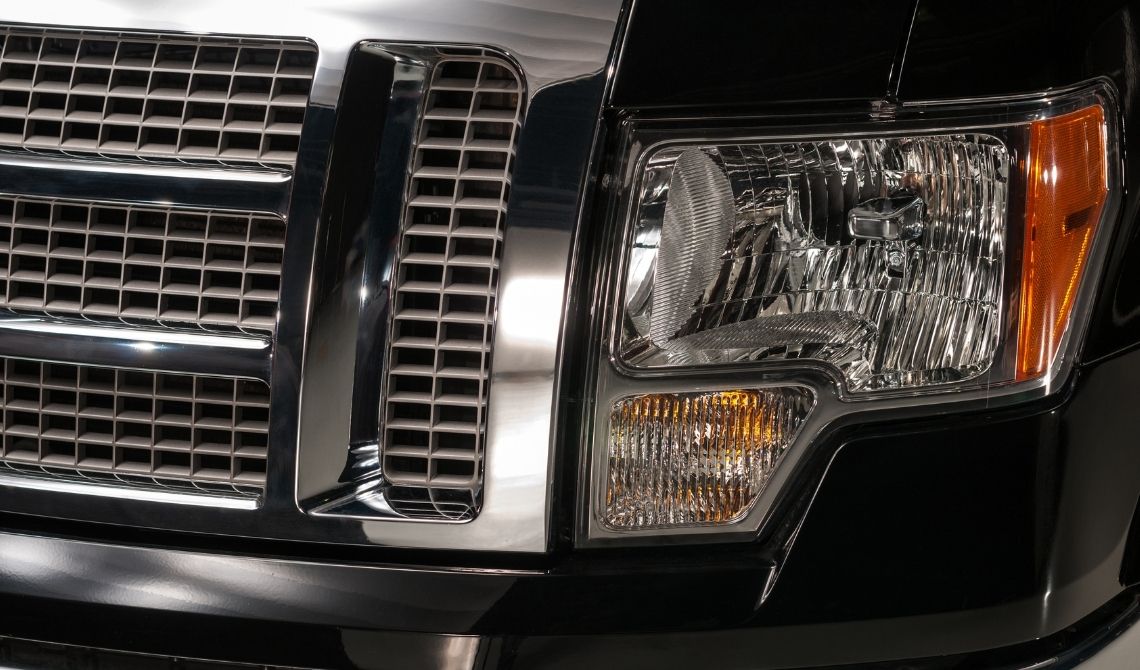Ultimate Guide Truck Performance Boost – Check Now!
Engine Tuning
Engine tuning serves as the cornerstone for maximizing truck performance, encompassing a range of adjustments to optimize power output and efficiency. By fine-tuning various engine parameters, truck owners can unlock hidden potential, enhancing horsepower, torque, and fuel economy. However, successful engine tuning requires expertise and precision to avoid detrimental effects on the engine’s longevity and reliability.
Within the realm of engine tuning, numerous techniques can be employed. These may include adjusting fuel delivery, ignition timing, and airflow to achieve an optimal balance tailored to the specific demands of the truck’s usage. Whether it’s towing heavy loads, navigating challenging terrains, or maximizing highway efficiency, customized engine tuning can tailor performance to suit diverse needs.
Moreover, modern trucks often come equipped with sophisticated engine management systems, necessitating specialized tools and knowledge for effective tuning. Seeking assistance from experienced professionals ensures that tuning efforts are conducted safely and yield desired results.
The benefits of engine tuning extend beyond mere performance enhancements. Improved fuel efficiency translates to cost savings over the long term, making it a worthwhile investment for commercial fleet operators and individual truck owners alike. Additionally, optimized engine performance contributes to reduced emissions, aligning with environmental sustainability goals.
In summary, engine tuning stands as a pivotal step in optimizing truck performance. By harnessing the potential of advanced tuning techniques, truck owners can elevate their driving experience, achieve greater efficiency, and prolong the lifespan of their vehicles.
Aerodynamics Enhancement
Enhancing the aerodynamics of a truck is a key strategy in improving its overall performance and fuel efficiency. Aerodynamics play a crucial role in reducing drag, which directly affects the vehicle’s speed and fuel consumption. By implementing aerodynamic enhancements, truck owners can optimize their vehicles for better airflow management and reduced resistance.
Aerodynamic upgrades encompass a variety of modifications, ranging from streamlined designs to add-on components such as spoilers, fairings, and side skirts. These enhancements work collectively to minimize turbulence and airflow separation around the truck, thereby reducing drag and improving fuel economy.
Streamlined designs are particularly effective in reducing air resistance at high speeds, making them ideal for long-haul trucks and highway driving. Spoilers and fairings strategically redirect airflow, minimizing drag-inducing vortices and eddies. Side skirts installed along the bottom edges of the truck body further streamline airflow, reducing drag and improving fuel efficiency.
The benefits of aerodynamic enhancements extend beyond fuel savings. Improved aerodynamics can also enhance vehicle stability and handling, especially in adverse weather conditions or when towing heavy loads. Additionally, reduced aerodynamic drag translates to lower engine strain, potentially prolonging the lifespan of engine components.
It’s essential for truck owners to consider the trade-offs associated with aerodynamic upgrades, such as installation costs and potential changes in vehicle aesthetics. However, the long-term benefits in terms of fuel savings and improved performance often outweigh these considerations.
In conclusion, aerodynamics enhancement presents a viable means of boosting truck performance and efficiency. By investing in aerodynamic upgrades, truck owners can optimize their vehicles for improved fuel economy, stability, and overall driving experience.
Tire Upgrades
Tires are a critical component of truck performance, directly influencing traction, handling, and fuel efficiency. Upgrading to the right set of tires tailored to the truck’s specific needs can significantly enhance its overall performance across various terrains and weather conditions.
Selecting the appropriate type of tire is essential for optimizing performance. Different tire designs cater to specific purposes, such as all-terrain tires for off-road capabilities, highway tires for long-distance driving, and winter tires for enhanced traction in snow and ice. By choosing tires that align with the truck’s primary usage, owners can ensure optimal performance and safety.
Tire upgrades offer several benefits beyond improved traction. Upgrading to high-quality tires can enhance fuel efficiency by reducing rolling resistance, which accounts for a significant portion of a truck’s energy consumption. Additionally, superior tire construction and tread patterns contribute to better handling and stability, especially during cornering and braking maneuvers.
Proper tire maintenance is equally crucial for maximizing performance and longevity. Regularly checking tire pressure, rotating tires, and inspecting for signs of wear and damage helps ensure optimal performance and safety. Additionally, adhering to recommended load capacities and speed ratings prevents premature tire wear and potential blowouts.
While tire upgrades may entail an initial investment, the long-term benefits in terms of improved performance, fuel efficiency, and safety justify the expense. Moreover, investing in high-quality tires can result in cost savings over time, as they tend to offer better durability and tread life compared to cheaper alternatives.
In summary, tire upgrades play a pivotal role in enhancing truck performance and safety. By selecting the right tires and prioritizing proper maintenance, truck owners can optimize traction, fuel efficiency, and overall driving experience, ensuring their vehicles perform at their best in any situation.
Suspension System Optimization
The suspension system of a truck is instrumental in providing stability, control, and comfort, especially when navigating diverse road conditions and carrying varying loads. Optimizing the suspension setup can significantly enhance the truck’s performance, ensuring better handling, improved ride quality, and increased load-bearing capacity.
An essential aspect of suspension optimization is selecting the right components tailored to the truck’s intended usage. Upgrading to high-performance shocks, struts, springs, and sway bars can enhance stability and control, especially when towing heavy loads or driving off-road. Adjustable suspension systems offer added flexibility, allowing drivers to customize settings based on driving conditions and preferences.
Proper suspension tuning is crucial for achieving the desired balance between ride comfort and performance. Adjusting parameters such as ride height, damping, and spring rates can fine-tune the suspension to suit specific driving preferences and terrain requirements. Professional suspension tuning services can help optimize the suspension setup for maximum performance and comfort.
In addition to performance enhancements, optimized suspension systems contribute to improved safety by reducing body roll, squat, and dive during cornering, braking, and acceleration maneuvers. This enhances overall vehicle stability and control, minimizing the risk of accidents and improving driver confidence, especially in challenging driving conditions.
Regular maintenance and inspection of the suspension system are essential for ensuring continued performance and safety. Checking for signs of wear, leaks, and misalignment allows for timely repairs and replacements, preventing potential suspension failures and costly repairs down the line.
In summary, suspension system optimization is integral to maximizing truck performance and safety. By selecting the right components, fine-tuning suspension settings, and prioritizing maintenance, truck owners can achieve superior handling, comfort, and control, enhancing their driving experience in various road conditions and load scenarios.
Exhaust System Enhancements
The exhaust system of a truck plays a crucial role in optimizing engine performance, emissions control, and overall vehicle efficiency. Upgrading exhaust components can lead to improvements in airflow, backpressure reduction, and engine sound, ultimately enhancing both power output and fuel economy.
One of the primary goals of exhaust system enhancements is to optimize exhaust gas flow, minimizing restrictions and maximizing scavenging efficiency. Upgrading to high-flow exhaust headers, catalytic converters, and performance mufflers can help achieve this, allowing the engine to breathe more freely and efficiently.
By reducing exhaust backpressure, exhaust system enhancements facilitate better engine breathing, resulting in improved horsepower and torque output. This translates to enhanced acceleration, towing capacity, and overall driving performance, especially in high-demand situations such as towing heavy loads or climbing steep inclines.
In addition to performance gains, exhaust system upgrades can also enhance the auditory experience, providing a deeper, more aggressive exhaust note that complements the truck’s performance-oriented character. However, it’s essential to strike a balance between performance and noise levels to comply with local regulations and ensure driver comfort.
Furthermore, modern exhaust systems incorporate emissions control components such as catalytic converters and diesel particulate filters (DPF) to reduce harmful emissions. Upgrading to high-performance catalytic converters and DPF systems can improve emissions efficiency without sacrificing performance, helping truck owners meet stringent emissions standards while enjoying enhanced engine performance.
Regular inspection and maintenance of the exhaust system are vital for ensuring optimal performance and compliance with emissions regulations. Checking for leaks, corrosion, and damage allows for timely repairs or replacements, preventing potential issues that could compromise performance and emissions compliance.
In summary, exhaust system enhancements offer a multi-faceted approach to optimizing truck performance, delivering improvements in power, efficiency, and sound. By upgrading exhaust components and ensuring proper maintenance, truck owners can unleash the full potential of their engines while maintaining emissions compliance and enhancing the overall driving experience.
Transmission Upgrades
The transmission system is a critical component of a truck’s drivetrain, responsible for transferring power from the engine to the wheels. Upgrading transmission components can lead to improvements in acceleration, towing capacity, and overall driving performance, making it a key consideration for enhancing truck performance.
One of the primary goals of transmission upgrades is to optimize gear ratios and shift points to better suit the truck’s intended usage. Upgrading to performance-oriented transmission components such as high-strength gears, torque converters, and shift kits can help achieve this, allowing for quicker shifts and improved power delivery.
Enhanced transmission components can also improve towing capacity by providing better torque multiplication and more efficient power transfer from the engine to the wheels. This is particularly beneficial for trucks used for hauling heavy loads or towing trailers, where the ability to maintain speed and control under load is crucial.
In addition to performance gains, transmission upgrades can also enhance driving comfort and fuel efficiency. Smoother shifts and optimized gear ratios can reduce engine strain and improve fuel economy, especially during highway cruising or stop-and-go traffic conditions.
Modern transmission systems often feature electronic controls that govern shift timing and behavior. Upgrading to performance-oriented transmission controllers or reprogramming existing ones can further fine-tune shift points and response characteristics, allowing for a more personalized driving experience.
Proper maintenance and fluid changes are essential for ensuring the longevity and reliability of the transmission system. Regularly inspecting for leaks, monitoring fluid levels, and following manufacturer-recommended service intervals can help prevent premature wear and costly repairs.
In summary, transmission upgrades offer a valuable opportunity to enhance truck performance, providing improvements in acceleration, towing capacity, and fuel efficiency. By upgrading transmission components and ensuring proper maintenance, truck owners can optimize their vehicles for a wide range of driving conditions and applications, ensuring a smoother, more efficient driving experience.
Electronic Performance Tuning
Electronic performance tuning offers a sophisticated approach to optimizing truck performance by fine-tuning the electronic control systems that govern engine operation. By adjusting parameters such as fuel delivery, ignition timing, and throttle response, electronic tuning can unlock hidden power potential, improve fuel efficiency, and enhance overall driving dynamics.
One of the primary advantages of electronic performance tuning is its ability to tailor engine performance to suit specific driving preferences and requirements. Whether it’s optimizing for maximum power output, fuel economy, or a balance of both, electronic tuning allows for precise adjustments to meet the needs of individual truck owners.
Electronic tuning also offers flexibility in adapting to changes in driving conditions or modifications to the vehicle. Advanced tuning software and aftermarket tuning devices provide users with the ability to recalibrate engine parameters on-the-fly, allowing for quick adjustments to suit different driving scenarios.
Moreover, electronic performance tuning can complement other performance upgrades, such as engine modifications or exhaust enhancements, to maximize their effectiveness. By fine-tuning electronic control systems to work in harmony with upgraded components, truck owners can achieve synergistic improvements in overall performance and drivability.
However, it’s essential to approach electronic tuning with caution and expertise to avoid potential risks such as engine damage or voiding of warranties. Consulting with reputable tuning professionals or utilizing reputable tuning products ensures that tuning efforts are conducted safely and effectively.
Furthermore, staying informed about local emissions regulations and compliance requirements is crucial when performing electronic tuning. While tuning can offer significant performance gains, it’s essential to ensure that emissions remain within legal limits to avoid regulatory issues and penalties.
In summary, electronic performance tuning represents a powerful tool for optimizing truck performance, offering precise control over engine parameters and driving characteristics. By leveraging electronic tuning technology responsibly and intelligently, truck owners can unlock the full potential of their vehicles while maintaining compliance with emissions regulations and ensuring long-term reliability.
Conclusion: Take Action to Boost Your Truck’s Performance!
As we conclude our exploration of truck performance enhancement, it’s clear that numerous strategies and upgrades can significantly elevate your truck’s capabilities. From engine tuning to electronic performance enhancements, each chapter has highlighted various avenues through which you can optimize your truck for better performance, efficiency, and overall driving experience.
Now armed with knowledge about engine tuning, aerodynamics enhancement, tire upgrades, suspension optimization, exhaust system enhancements, transmission upgrades, and electronic performance tuning, it’s time to take action. Assess your truck’s current performance and identify areas where upgrades or optimizations could make a meaningful difference.
Whether you’re a commercial fleet operator seeking to improve fuel efficiency and productivity or an individual truck owner looking to enhance your vehicle’s performance for recreational or professional purposes, the steps outlined in this guide offer a roadmap to achieving your goals.
Remember to approach performance upgrades with careful consideration and attention to detail. Consult with knowledgeable professionals for advice and assistance when necessary, especially when delving into more advanced upgrades such as engine tuning or electronic performance enhancements.
Additionally, prioritize regular maintenance and upkeep to ensure that your truck remains in optimal condition for years to come. Proper maintenance not only preserves performance gains from upgrades but also contributes to long-term reliability and safety.
In conclusion, the journey to boosting your truck’s performance begins with understanding its capabilities and identifying areas for improvement. By implementing the strategies and upgrades outlined in this guide and staying proactive about maintenance and upkeep, you can unlock the full potential of your truck and enjoy a more satisfying driving experience. So, what are you waiting for? It’s time to take action and elevate your truck’s performance to new heights!
For detailed information, you can contact us at Truck Headlights


